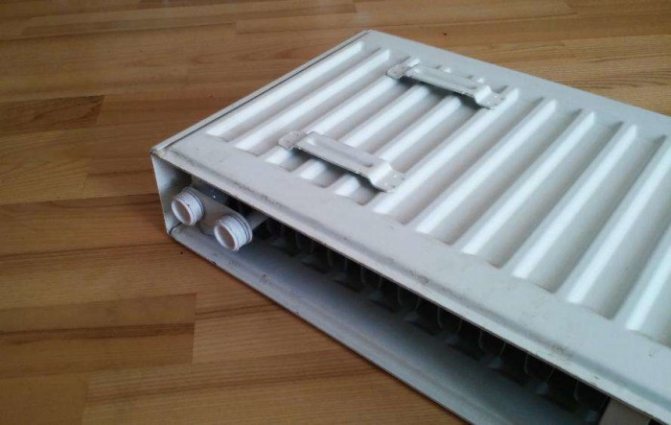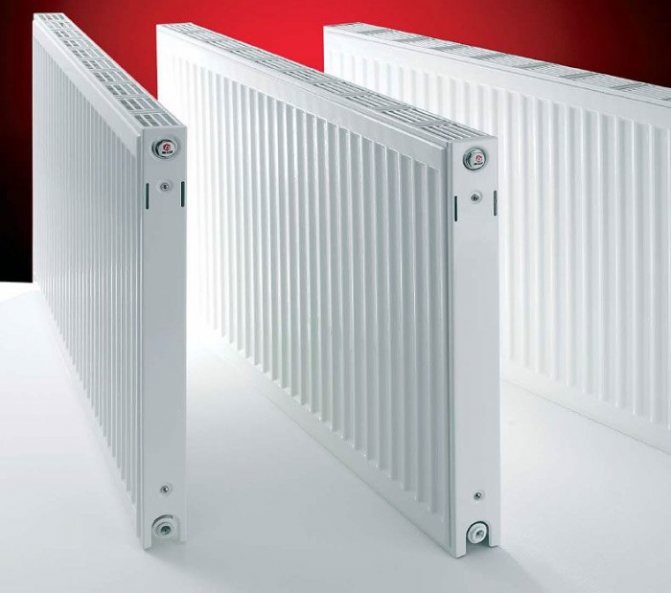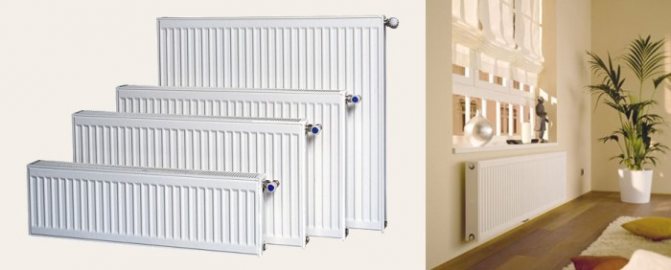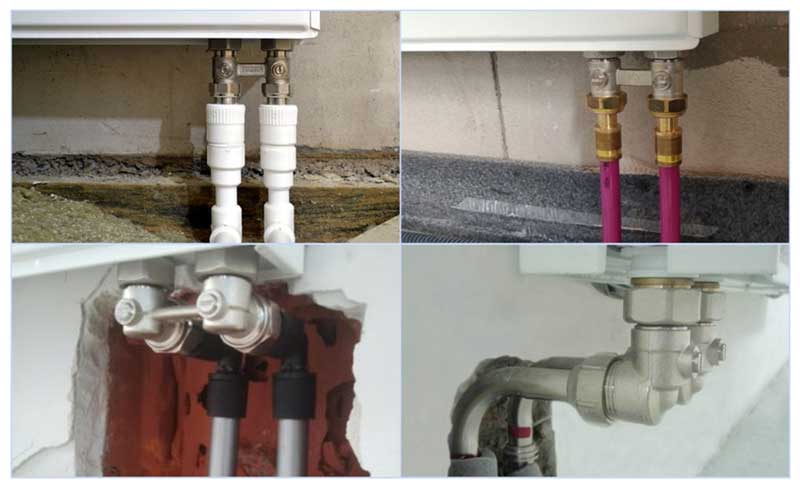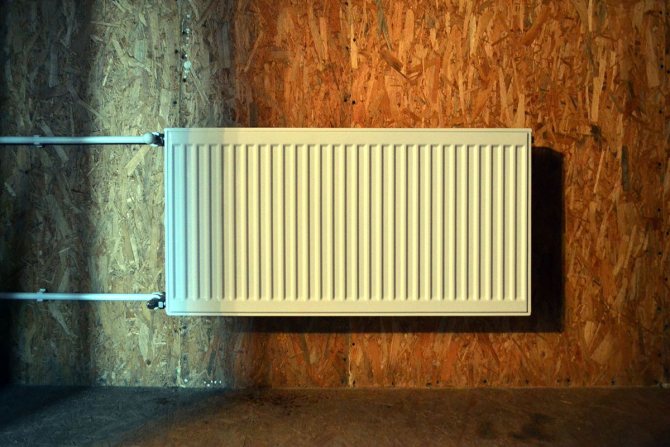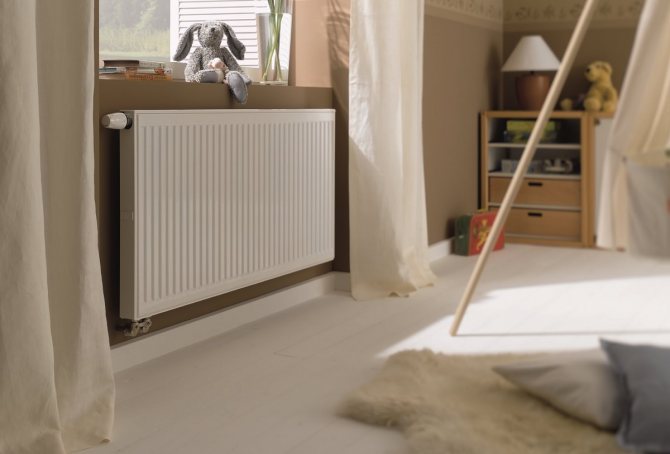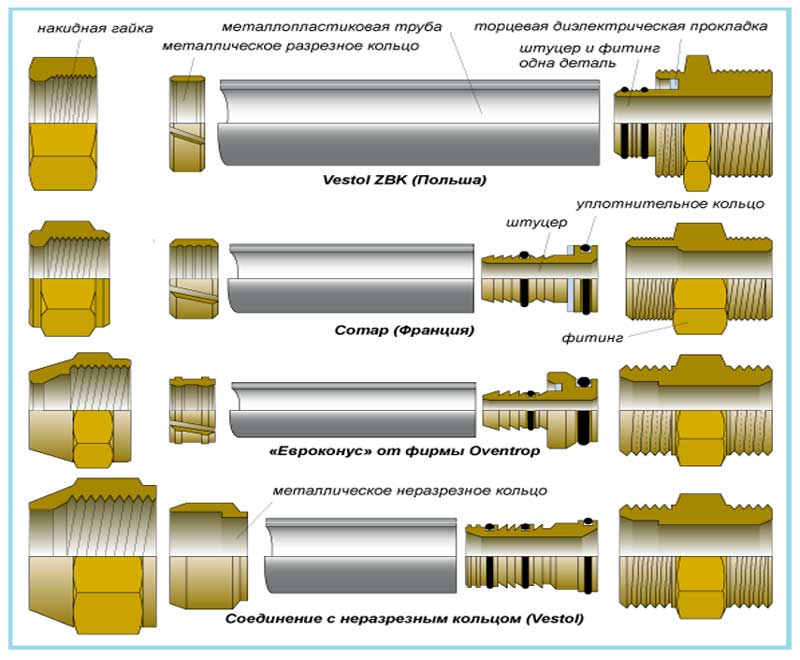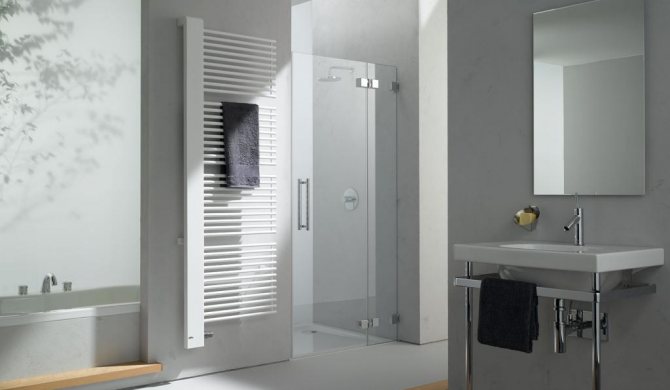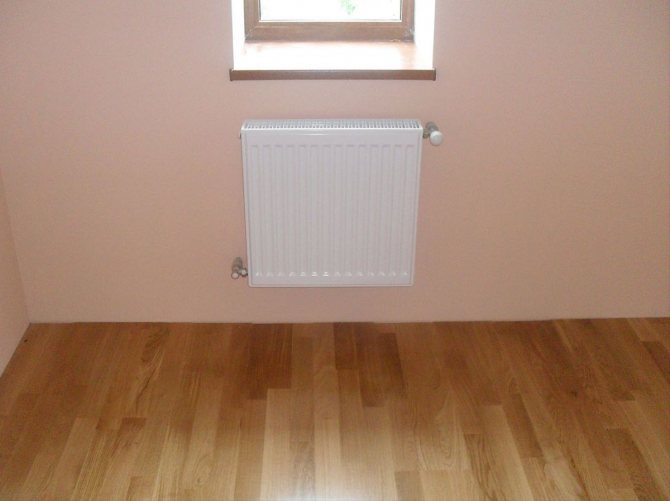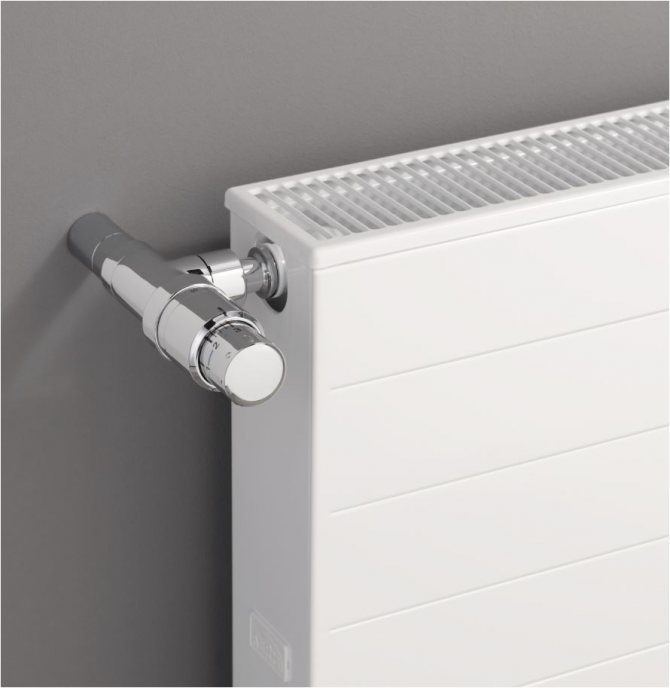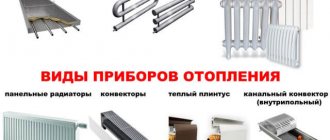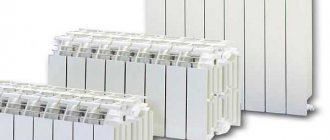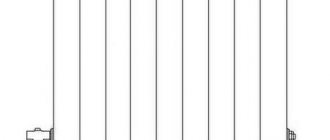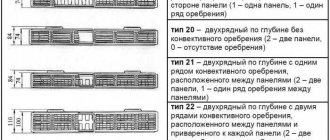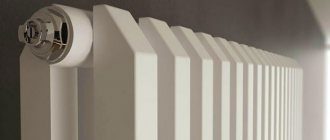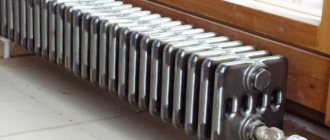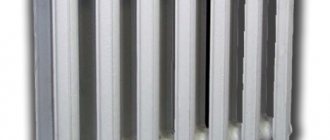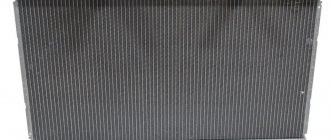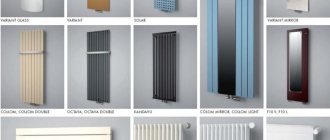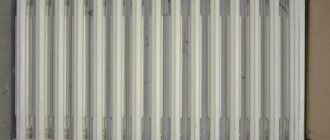Valve fittings Kermi
Kermi valve radiators are equipped with a valve insert already at the factory, adjusted to their heat output. By means of the valve inserts installed as standard, it is possible to set 8 basic positions (kv) and 7 intermediate adjustment positions. To ensure the same quality of regulation throughout the entire power spectrum, fine adjustment inserts are installed on small radiators.
Factory presets
The factory default kv values are limited to 5 out of 15 possible. The kv factory settings are designed for conventional heating systems (eg single or double family houses) with a differential pressure (Δp) of 100 mbar.
Benefits of Factory Preset Valve
Almost perfect hydraulic balancing for use in buildings up to 1000 m² (according to the certificate of the Aachen specialized institute, Prof. Dr.-Ing. Rainer Hirschberg.) KfW permits in its requirements up to 500 m² of usable area for each heating line equipped with a pump.
- Application of more favorable hydraulic equalization factors for the energy assessment of buildings in accordance with DIN EN 18599.
- Appreciation for the inspection of heat sources and heating systems according to DIN EN 15378 and / or DIN 4792
- Meets the terms of the current support program
- • Time savings for designers and installers due to - low design costs - low commissioning costs
- - direct positive impact on the energy passport of the building
- Energy savings of up to 6% compared to systems without hydraulic balancing, up to an additional 20% energy savings for the circulation pump
Distinctive features and advantages of Kermi valves
- The absence of step transitions in the regulation of the coolant flow allows for a finer adjustment of the valve. Advantages: - more fine adjustment is possible - better possibilities for washing replaceable modules. - less susceptible to interference
- Two different valve sizes Advantage: - Better control quality, even with small radiators
- Valve color coding according to kv value Advantage: Preset kv value - spare part (supplied fully open) can be installed without problems.
- Certification according to EN 215 (registration number 6T0002 + 6T0006)
Perfect hydraulic balancing
According to a study by the Aachen Institute, factory presets of Kermi thermostatic radiator valves in 2-pipe radiant heating systems and heated areas up to 1000 m² ensure hydraulic balance and do not require additional hydraulic balancing.
Read also: DIY motoblock winch
More detailed studies have shown that these factory settings can be considered hydraulic balancing, as compared to a perfectly balanced system, the increase in energy consumption for heat transfer is only about 0.5%, which can be compared with the usual error with detailed calculation and generally accepted deviations in settings. in places.
Heating systems in which the radiators are equipped with built-in thermostatic valves with factory settings are, from a technical point of view, hydraulically balanced in terms of energy evaluation (eg according to DIN V 18599).
Adjusting heating radiators makes it possible to create the most comfortable living conditions in a residential area. The degree of heating of the battery depends both on the temperature of the coolant and on the physical volume of hot water entering the radiator. There are several ways to regulate the temperature of radiators from very good to dangerous, so before you get down to business it is better to read the quick guide outlined in this article.
The adjustment makes it possible:
- get rid of airing, which helps the coolant move around the heating system without problems;
- significantly reduce heating bills (mainly in private houses);
- do not arrange drafts, with significant overheating of the air in an apartment or a private house.
Attention! In standard panel houses with an upper supply of the heating agent, it is almost impossible to adjust the radiators.
Methods for adjusting heating batteries
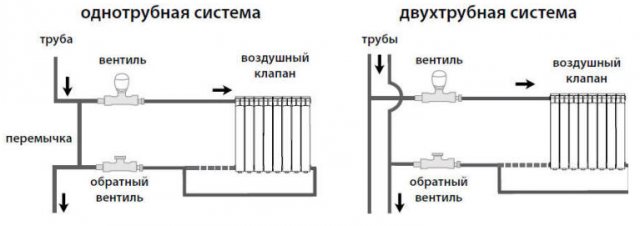
For proper heat dissipation of radiators, correct placement is an important factor. Batteries should be located where heat leakage is greatest - under windows and not far from entrances.
The heating section connection diagram also works as an adjustment of return or supply heating radiators.
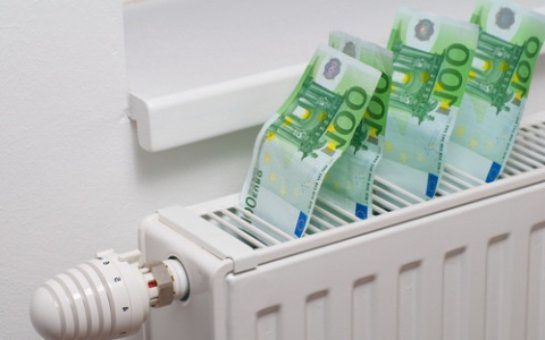

The most effective system is considered to be in which hot water is supplied from the top of the device, and the return flow is output at the bottom. Such a connection is called diagonal, thanks to this scheme, all sections of radiators receive heat evenly.
Sometimes they are connected the other way around - the supply is from the bottom, and the return is connected at the top. In this option, the loss of the coolant increases to 20% (in contrast to the first option, where the maximum is 5%). This method is used mainly in circuits with powerful forced circulation.
Losses are also high in systems with a bottom connection. Here, both the supply and return are included in the lower part of the heating device. But if the pressure of hot water is large enough, then the vortex flows created in the battery give a good effect.
In individual heating systems, careful adjustment of the return flow of heating radiators is necessary. A large difference in flow and return temperatures can lead to boiler breakdown.
Numerous videos on the Internet show detailed details of all the options for connecting heating devices.
The cost of radiators KERMI
Prices in full depend on power... The table shows the cost in Moscow.
| up to 1 kW | 1-2 kW | 2-3 kW | 3-5 kW | more than 5 kW |
| FTV 11 | 2 000−4 500 | 5 000−6 000 | 7 000 | |
| FTV 22 | 3 000−4 500 | 5 000−6 000 | 8 100 | 9000−10 000 |
| FTV 33 | 4 000 | 4 600−5 900 | 6 200−7 800 | 8 400 |
| FKO 11 | 1 300−3 500 | 4 000−5 500 | 6 000 | |
| FKO 22 | 3 000−4 000 | 4 000−5 000 | 5 500−7 500 | 8 000−10 500 |
| FKO 33 | 740−920 | 3 900−5 200 | 5 500−7 100 | 7 800−8 500 |
Options for increasing heat transfer
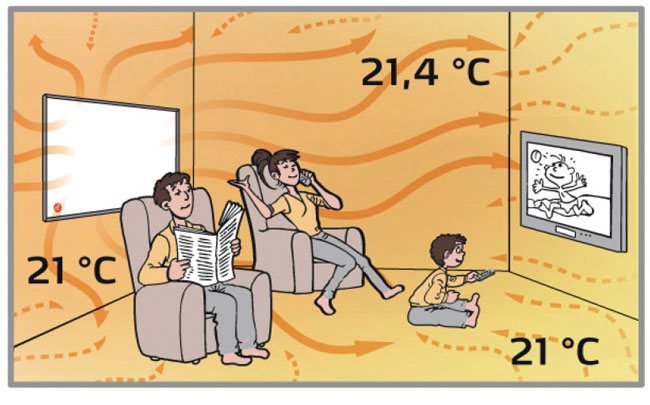

Any regulating device is capable of lowering the temperature of the battery. It is impossible to force the radiator to give off more heat. If the batteries in the apartment are cold, and the temperature in the room does not meet the standards (for corner rooms it is + 20-22, for the rest - +18), you can try to change it in the following ways:
- try to remove air locks in batteries and clean pipes and filters;
- analyze the connection diagram and possibly change it;
- add the required number of radiators.
I would like to dwell on the last point. When the comfort in the apartment is at stake, it is advisable to avoid mistakes in the choice of radiators, because it will be impossible to change anything.
Purmo steel panel devices show good results. The built-in convection elements of these batteries provide accelerated heating of the room; they can be used in both one-pipe and two-pipe heating options.
A worthy competitor to them is the RIFAR Base company, which presents a whole line of bimetallic and aluminum radiators. These batteries are able to withstand high pressure and normally perform their functions with significant surges in heating networks.The heat transfer percentage of these heating devices is very high. The RIFAR Base 500 model is the most powerful in the range of bimetallic devices, and is intended for heating large rooms with poor thermal insulation.
German radiators Kermi deservedly enjoy a good reputation. They are steel or bimetallic. Three types of metal of various thicknesses are used for production. Heating technology "Kermi" is mainly suitable for installation in cottages and private houses.
Kermi FTV 33 models
In terms of heat transfer, these models are recognized as one of the best heaters: they are ideal for large houses, have many functions, and in general, such heating systems allow you to set different modes for individual rooms.
This line of heaters has the most powerful thermal conductivity thanks to three heating panels and three heat convectors.
Characteristics
All kermi equipment is made from the same materials, the only difference is in the number of heaters and parameters:
- strong steel with hydrocarbon gives strength and durability;
- good heat transfer;
- the presence of two heating pipes: supply and outlet;
- the maximum number of heating panels on the heater market;
- external U-shaped appearance;
- height - from 300 mm, width - from 400 mm, depth - from 155 mm.
The kit includes all fasteners, air vent, thermostat valve.
The cost
The price of the devices is higher than the previous models, which is due to the higher heat dissipation of the FTV 33 radiators. The approximate prices are as follows:
- the 300x1600 model with a heat transfer of 2939 W and a capacity of 8.64 liters costs 10,000 rubles;
- a 500x3000 heater with a heat transfer of 8319 W and a capacity of 24.3 liters costs 18,000 rubles;
- a 900x2000 radiator with a heat dissipation of 8782 W and a capacity of 27 liters costs 22,000 rubles.
Features of the
Heating in the radiator is carried out sequentially, which ensures high heat transfer in large rooms. Kermi models can be installed in a niche, but this requires leaving a small distance on the sides to be able to remove the end plates and grille.
Prior to the introduction of the new Therm X2 technology, the radiators of the well-known Kermi FTV brand were marked FKV. Thanks to this innovation, significant energy savings are achieved and the efficiency of the heater is increased.
Adjustment devices - taps, valves, automation
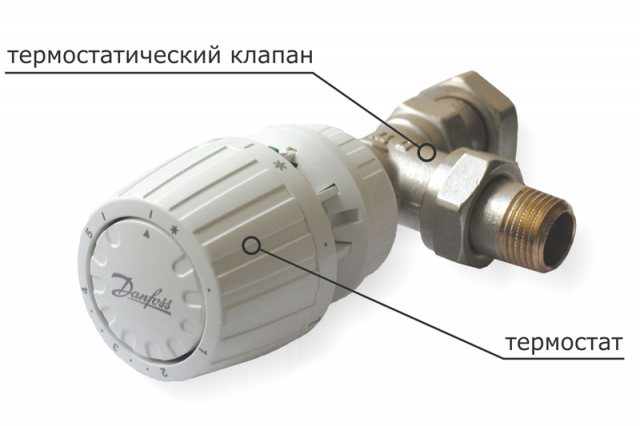

Adjustment of heating radiators in an apartment, in the country, in a mansion directly depends on the quality of the control valves.
A shut-off ball valve with a large stretch can be classified as a regulating device. It cannot provide a stable thermal regime; such a device requires constant manipulations during adjustment.
Important! This crane must always be in one of the extreme positions. In an intermediate position, its seal becomes unusable and it leaks.
.
Read also: Accuracy class of electricity meters for residential buildings
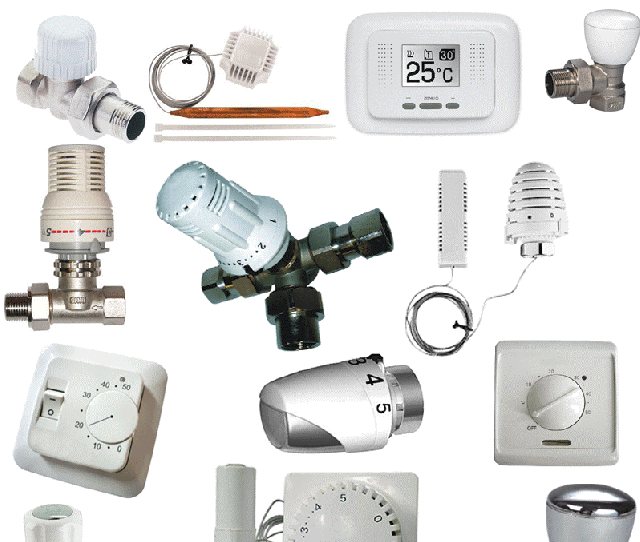

The hexagon valve can change the amount of hot water supplied to the battery. This is achieved by changing the valve bore. Its valve is mechanically linked to a dividing scale on the handle. The scale marks are used to set the optimum temperature. Such valves are very inexpensive and reliable enough, but they require constant monitoring.
The automatic thermostat itself changes the heating temperature of the radiator depending on the room temperature. This process is commanded by a temperature sensor.
Thermostatic thermostats are very similar to a manual valve, while a thermostatic head is mounted on the valve valve, which controls the operation of the valve.
The most perfect is the electronic thermostat, it has the largest set of functions. Devices of this type allow their operation to be programmed by setting the required temperature at different time intervals.The control panel of such a thermostat is equipped with a convenient display with buttons.
Important! In standard high-rise buildings with a centralized heating system, the water in the system contains impurities that clog the thermostats. Therefore, when installing automatic regulating devices, it is necessary to install special filters in front of them. This protection requires constant maintenance.
Thermostats can not only maintain a comfortable room temperature, but also reduce the cost of heating the coolant.
Today, the indicator of generated energy resources, which are spent on heating and ventilation of structures, reaches 40 - 45%. Unfortunately, in our country this value is several times higher than in more developed countries.
In this regard, oddly enough, the problem of energy saving is one of the most acute and discussed. It is also worth remembering that the cost of energy for household purposes is constantly growing.
There are a huge number of ways to save on electricity, but this article will focus on heating radiators and thermal heads, which can significantly reduce the cost of maintaining heat in the house. But, it is necessary to choose the right thermostat for your heating system, as well as to install them correctly.
Manufacturing
Kermi heating radiators have been produced by the German company of the same name for forty years and rightfully occupy the first lines in the lists of popularity among the sales of equipment of this class in Europe. Steel radiators account for over 90% of sales in Europe.
This means that the Kermi heating radiator is installed in nine out of ten heated rooms in Europe (of those with steel radiators).
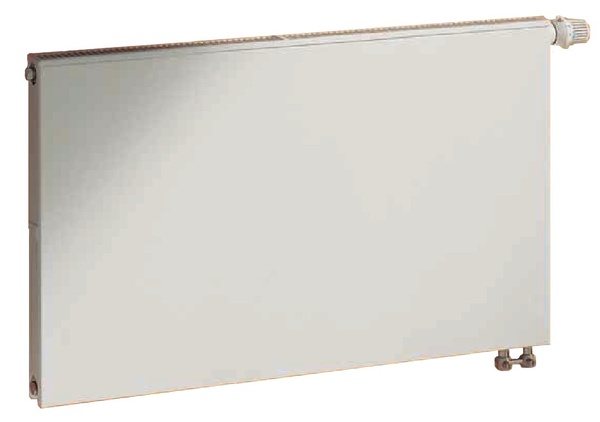

Sectional panel radiator
Design features of steel panel radiators
- When developing and designing steel panel radiators, it was envisaged to operate them under the conditions of using various temperature control equipment, as well as to be installed in modern closed-type heating systems, which are distinguished by energy-saving factors;
- In the production of steel panel radiators, cold-rolled steel with a thickness of 1.2 mm is used;
- Radiators are made with multi-row design (from one to three);
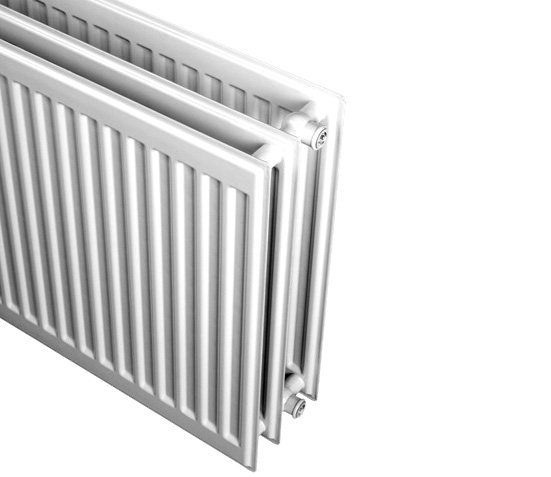

Radiator with two panels
- Installation of convective fins on the heating panel is possible;
- Steel panel radiators are produced in a wide range of rated heat transfer capacities, which makes it possible to use these heating devices in various rooms and operating conditions.
Thermal head: working principle
The thermal head is a special device that is needed to adjust the temperature in the radiator. The first versions of such heads appeared back in 1943, developed by the DANFOSS company.
Several decades have passed since the appearance of the first thermostatic heads with a remote sensor. Naturally, as is the case with any other technique, during this time the product has undergone a huge number of changes, as a result of which the quality and accuracy of thermostats have increased. Their design consists of only two main parts: a valve and a thermal head. They are connected by a special locking mechanism.
The very principle of the mechanism looks like this: the thermal head constantly measures and analyzes the temperature of the radiator and affects it with a valve that opens and closes the flow of water into the radiator.
This method of temperature control is called quantitative, since the mechanism changes the amount of coolant that passes through the heating radiator. There is another method called quality. The point here is to regulate the temperature directly in the system itself. This issue will help to solve a special mixing unit, which is installed in the boiler room.
How to choose the right thermostatic mechanism for a radiator
When choosing a thermal head, it is necessary to take into account all the features of the installed heating system. Taking into account these features, as well as the installation conditions of the radiators, a wide range of combinations of heads and valves opens up.
For example, if your heating system is identified as a one-pipe system, valves with the maximum water flow are best suited, as with two-pipe systems in which water moves naturally without any mechanical intervention.
But if a two-pipe radiator is used, the supply of water in which is due to the circulation pump, then it is best to select a valve with regulation of this very supply.
After the correct decision on the choice of the valve has been made, you can proceed to the thermal head itself.
There are five most common and affordable options. thermal heads from Kermi, which can be purchased, namely:
- consignment note with an internal thermoelement;
- electronic with the possibility of programming;
- with an external temperature sensor;
- anti-vandal;
- thermal heads with external regulator.
Classic thermal heads, in which the temperature sensor is installed internally, are installed in cases where the axis of the device is in a horizontal position after installation.
Many professionals recommend do not install the thermal head vertically on the heating radiator. The fact is that the heat that comes from the radiator will strongly affect such an installation, as a result of which the device will almost 100% malfunction.
If for any reason it is not possible to install the head horizontally, you can use a special remote temperature sensor, which is attached to the capillary tube.
Read also: How to connect a speed controller to a grinder
There are other reasons for installing an external temperature sensor, namely:
- If the radiator will be located behind curtains.
- If there is another heat source near the thermal head.
- If the battery is located under a large windowsill.
With regard to electronic sensors with external display and programmability, they are also of two types:
- with built-in control unit;
- with a removable (external) control unit.
Devices with a removable control unit can also continue to work after it has been separated from the structure, which is not the case with the option with a built-in control unit. However, of course, the price of the second option is slightly higher..
These types of thermal heads can significantly reduce the price of electricity, since they allow you to regulate the temperature in different modes and at different times of the day. Thus, the heat level can be reduced during the day and increased at night.
Anti-vandal devices will be a great solution for homes with small children. As we all know, children always love to touch and twist everything. And this is not always safe for both children and the mechanisms themselves in the house. Vandal Proof Thermostats will protect the settings of the mechanism from vandal actions performed with them. In public buildings, oddly enough, such thermal heads have also become widespread.
Benefits of radiators with bottom piping
All kermi models have a modern and compact appearance. In addition to aesthetic properties, there are other important benefits:
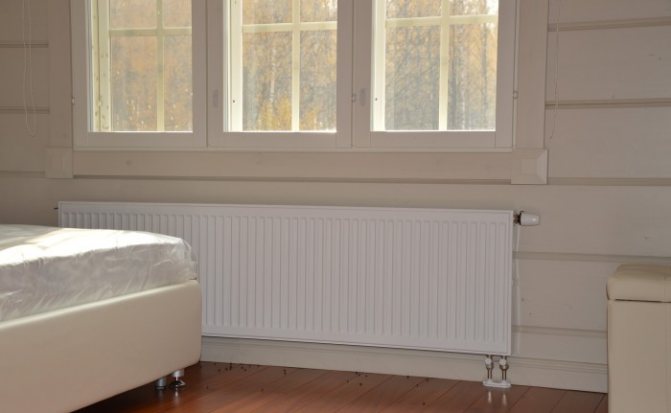

- the presence of a block that turns off the radiator in one room and does not affect the rest of the rooms in the house;
- bottom connection is used in panel and tubular models;
- easy installation and ease of use of the product, the ability to hide pipes and wires under the floor;
- such radiators can be installed in any heating system, variations in capacities and structures;
- the presence of a thermostat and a thermostatic valve.
Kermi heating radiators make it possible to save on heating costs for the house, since it is possible to heat only some rooms.
Installing a thermo head on a heating radiator
As mentioned earlier, the installation of the thermostatic valve is best done in a horizontal position relative to its axis.
You also need to know that there is no need to install mechanisms on absolutely every battery in your heating system. There is a rule that has been formed over decades. It sounds like this: only those radiators need to be adjusted, which in total have a little more than 50 percent of the total capacity of the system. For example, if in the house has only 2 heating radiators, you need to choose a powerful one and install a thermal valve on it.
It should also be borne in mind that if we are talking about cast-iron radiators, then the use of a thermostatic valve will be as ineffective as possible, that is, useless. The reason for this is that such radiators are inert, which leads to a long adjustment delay, from which there will be no sense. Therefore, installing thermostats on cast iron batteries is a pointless exercise.
It is best to mount the valve on the supply pipe when it is connected to the general system. If this happens in an already assembled heating system, then dismantling of some elements and cutting pipes cannot be avoided, which will lead to great inconvenience.
After the valve has already been installed, the thermal head is installed very easily by aligning the corresponding marks on the material housings and fixing the device with a gentle push, followed by a click, which serves as a signal that the mechanism is firmly fixed on the valve.
It is much more difficult to install the anti-vandal regulator, which was discussed above. At the very least, you need a 2mm hex wrench. Using dowels, it is necessary to fix a special mounting plate in the wall, and then fix the body of the mechanism itself on it. Next, you need to install the capillary tube to the wall using ordinary plastic clamps. And only after that you can fix the thermal head itself with a key.
On the back of any thermostatic regulator, you can find restrictive fonts that serve to set the maximum and minimum temperature of the water in the radiator.
Additional recommendations for installing thermal valves:
- Under no circumstances should direct sunlight be allowed on the body of the mechanism. This will damage the thermostatic head very quickly.
- Any interior items should not overlap or hide the thermostatic element from the rest of the room. If we make this mistake, the air temperature near the mechanism will be an order of magnitude higher than in the room. Also, the thermostat must not be positioned above rising heated air currents. For example, it cannot be placed directly above the radiator.
- The possibility of any kind of pressure on the thermostatic valve arising from the connected piping must be excluded.
Range
Kermi currently manufactures a wide range of panel radiators. In addition, the company manufactures heated towel rails and steel tubular radiators, which are considered a fairly high-quality type of heating elements with an original design that distinguishes them from the general range of heating devices.
Tubular radiator
Important! Tubular radiators manufactured by this company are considered the safest in terms of your safety, both thermal and mechanical. They have no sharp corners to injure themselves.
The range of steel radiators includes models with various types of surfaces:
- profiled (Profil);
- smooth (Plan).
Radiator with smooth panel surface
The installation height of these products ranges from 250 to 1,000 mm; assembly length of steel radiators - 350 - 3,000 mm.
These factors make it possible with your own hands to choose the necessary heating device with the closest technical characteristics to the calculated ones, as well as with dimensions that will fit into the interior of the room.
The number of heating panels for each radiator (as mentioned above, there can be from one to three) allows you to change the power of the heater while maintaining the same sections. This, of course, makes it possible to select options for the power of the heater.
Kermi has also produced valve radiators under the Profil V and Plan V trademarks, which differ in the strapping (bottom or side), as well as the presence of a thermal valve. These devices provide for the installation of an automatic thermostatic head.
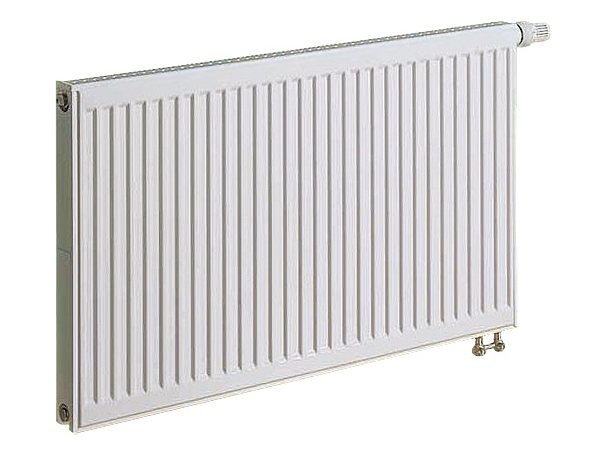

Profile radiator with bottom trim
Radiators with the symbol “12” are ultra-flat two-row compact batteries with 25% higher heat dissipation than radiators of the 11th series. These devices have a mounting depth of 65 mm, which makes it possible to install them without a special niche device, which increases their power.
Video about Kermi radiators:

